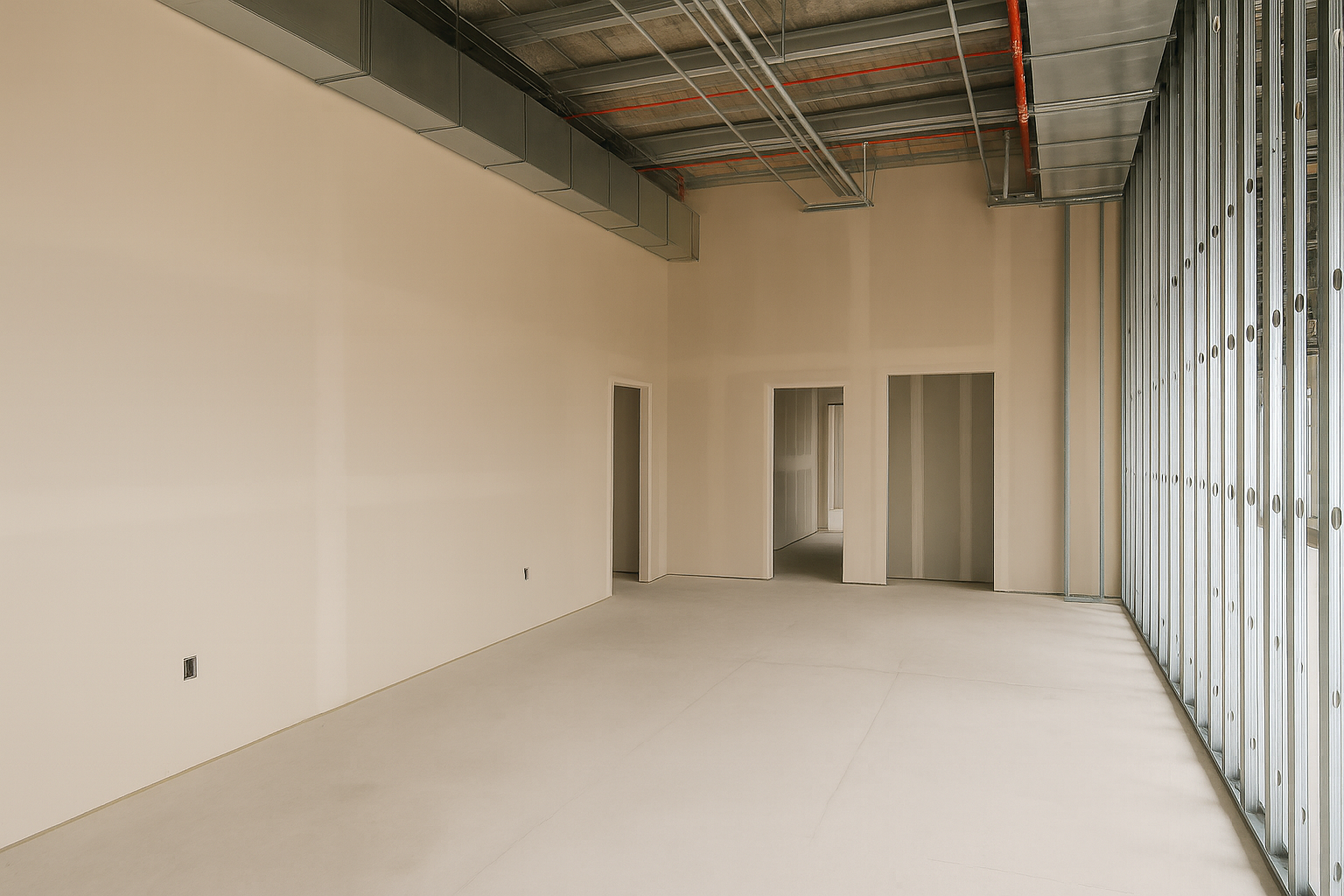
Accounting for backing in wet walls is one of the most commonly underestimated components of drywall estimation. Yet, it can significantly affect both cost and schedule if not identified and quantified early. For Architects, Engineers, and General Contractors, backing represents a material and labor-intensive element that supports fixtures, accessories, or finishes—particularly in moisture-prone environments like bathrooms, kitchens, or mechanical rooms.
Backing refers to structural support materials—typically wood or metal blocking—inserted behind drywall to provide a secure base for mounted items. In wet wall assemblies, backing is required for elements such as:
While backing might seem like a minor scope item, it introduces complexity into framing, inspection sequencing, and scheduling. Failing to account for backing in estimates can lead to rework, change orders, and delays—especially in commercial or healthcare builds where wall loads are highly regulated.
Backing is frequently omitted from early estimates due to:
This creates a gap in drywall estimates where labor and material for backing go untracked until late-stage coordination—resulting in cost exposure.
Rather than relying on assumptions or manual markups, modern estimating workflows can now incorporate historical data and smart rule-based templates to forecast backing needs. By using pattern recognition across room types and fixture layouts, estimators can proactively account for common backing conditions. For example:
This granular cost forecasting is enhanced when integrated into systems like Active Estimating, which uses structured data from prior projects to automate quantities and verify constructability details before construction documents are finalized.
Estimators can reduce surprises and improve cost accuracy by applying the following steps:
Failure to include backing for wet walls during preconstruction not only impacts framing timelines but also creates cost disconnects between drywall and carpentry or MEP trades. It leads to scope disputes over who provides backing, and increases the chance of opening walls post-inspection—an expensive and avoidable consequence.
Through intelligent automation and historical benchmarking, solutions like this drywall estimating software support proactive planning, allowing teams to identify backing requirements before bid submission and avoid downstream conflicts.
Backing in wet walls is no longer a line item that can be skipped or vaguely assumed. Its influence on safety compliance, durability, and system integration means it must be embedded in every drywall estimate. By applying data-driven intelligence and integrating historical patterns into estimation tools like Active Estimating, construction professionals can forecast true costs with greater clarity—and build with confidence from the inside out.
Contact Information:
Active Estimating
508 2nd Street, Suite 208
Davis
California
95616
Rich Schoener
richard@activeestimating.com
(877)
Schedule a personalized demo to see how Active Estimating can work for your specific needs.
